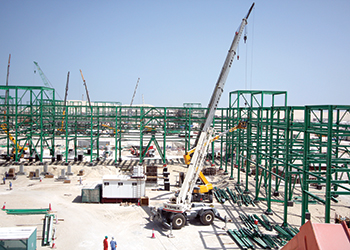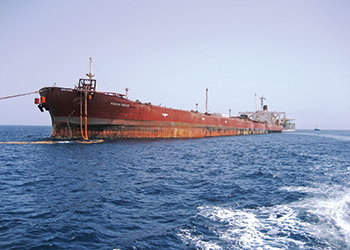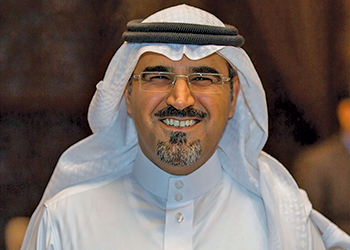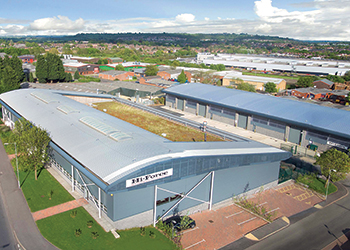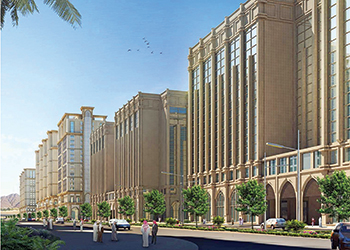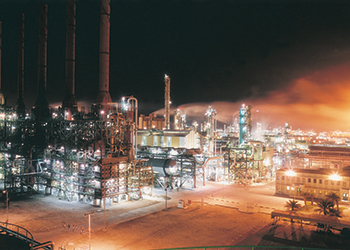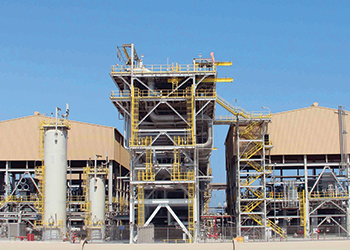
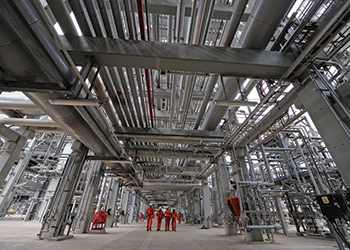 Qatargas ... significant achievement
Qatargas ... significant achievement
The firm’s offshore facilities are outstanding not only in terms of safety record, but also from a reliability perspective, ensuring sustained production of LNG
Qatargas has completed 13 years of operations in its offshore facilities without a lost time incident (LTI).
Comprising nine offshore platforms, the Qatargas offshore facilities supply gas and condensate to the onshore liquefaction plant at Ras Laffan, the largest in the world, with a production capacity of 42 million tonnes per annum (MTA) of liquefied natural gas (LNG).
The Qatargas offshore facilities are located approximately 80 km northeast of Qatar’s mainland. A total of 85 wells together supply about 7.5 billion standard cubic feet of gas to the seven LNG production trains onshore. The gas, along with the associated condensate is transferred to shore via subsea pipelines.
The Qatargas offshore facilities are outstanding not only in terms of safety record, but also from a reliability perspective, ensuring sustained production of LNG from Qatargas’ onshore plant, its spokesman says.
The company attributed this achievement to the hard work and dedication of everyone working on North Field Bravo (NFB), commissioned in 1996 and is the heart of its offshore operations, along with the continuous support from other departments.
Qatargas offshore operations operate three assets — Qatargas 1, Qatargas 2 and Qatargas 3&4 (joint asset of Qatargas 3 and Qatargas 4). There are seven remote wellheads platforms, and the farthest platform is wellhead-4, which is 29.6 km away from the NFB complex.
NFB has 90 Qatargas direct hire employees and 36 permanent contractors working onboard for 28 days followed by a field break for 28 days. Qatari employees working on NFB follow a seven days ‘on’ and seven days ‘off’ cycle. The average number of personnel on NFB at any given time is around 120.
Qatargas has hired three marine vessels (one safety stand-by vessel and two dynamic positioning vessels for transfer of passengers and materials. The materials include food supply, plant equipment related spares and chemicals, which are normally brought in once a week.
One DP vessel is located in the field to meet ad hoc accommodation requirements of small project works on a need basis.
Helicopter operations are mainly utilised for the transfer of passengers from Doha heliport to the main offshore facility and back. Remote platforms are also accessed using helicopters during bad weather conditions and emergencies.
Meanwhile, Qatargas has announced the successful start-up of the Plateau Maintenance Project (PMP), which aims to ensure the production capacity of Qatargas 1 is maintained at 10 million tonnes per annum (MTA) of Liquefied Natural Gas (LNG).
The project involved drilling and recompleting offshore wells, adding new onshore facilities for sulfur handling and modifying existing LNG production trains 1, 2 and 3. The shareholders in Qatargas 1 are Qatar Petroleum, ExxonMobil, Total, Mitsui and Marubeni.
Qatargas’ Ras Laffan Terminal Operations team operates all the oil products tank farms and related marine terminals at Ras Laffan Industrial City in Qatar. Ras Laffan is the largest LNG and oil products export terminal in the world. (QNA)
"This is indeed a significant achievement for Qatargas. We want to ensure Qatargas 1 can produce 10 MTA until the end of the concession in 2021 and well beyond. The Plateau Maintenance Project will help deliver that capability and enable Qatargas to continue to supply LNG safely and reliably to its customers. The project is yet another important milestone in Qatargas’ journey towards its Vision 2015.










































































